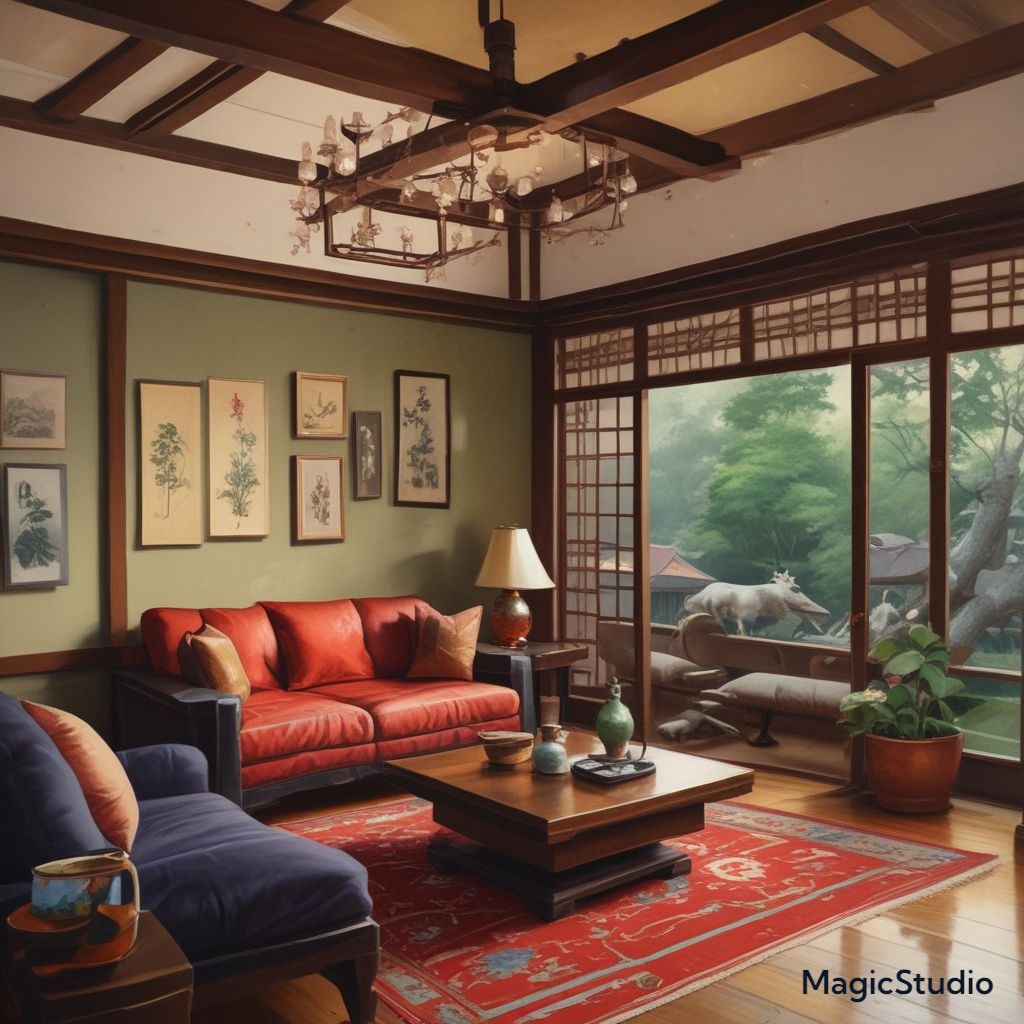Bringing the tranquility and elegance of Japanese design into your living room is a beautiful way to create a space that is both serene and stylish. From minimalist aesthetics to rich cultural influences, Japanese design offers a wealth of inspiration for transforming your living room into a sanctuary of peace and sophistication. This article will delve into 20 captivating design ideas, exploring color combinations, design styles, and the latest trends in both the US and EU, to guide you in creating a Japanese-inspired living room that embodies harmony and beauty.
Wabi-Sabi Serenity
Embrace the philosophy of “Wabi-Sabi” – the beauty of imperfection and transience. This aesthetic focuses on finding beauty in the weathered, the aged, and the natural. Use reclaimed wood furniture, vintage ceramics, and organic materials like bamboo or rattan. Color palettes often feature muted tones like grey, beige, and earthy greens, creating a calming and contemplative ambiance. In the US, Wabi-Sabi is gaining popularity for its understated elegance and focus on sustainability. In the EU, where vintage and rustic styles are cherished, Wabi-Sabi resonates deeply with the appreciation for patina and history.
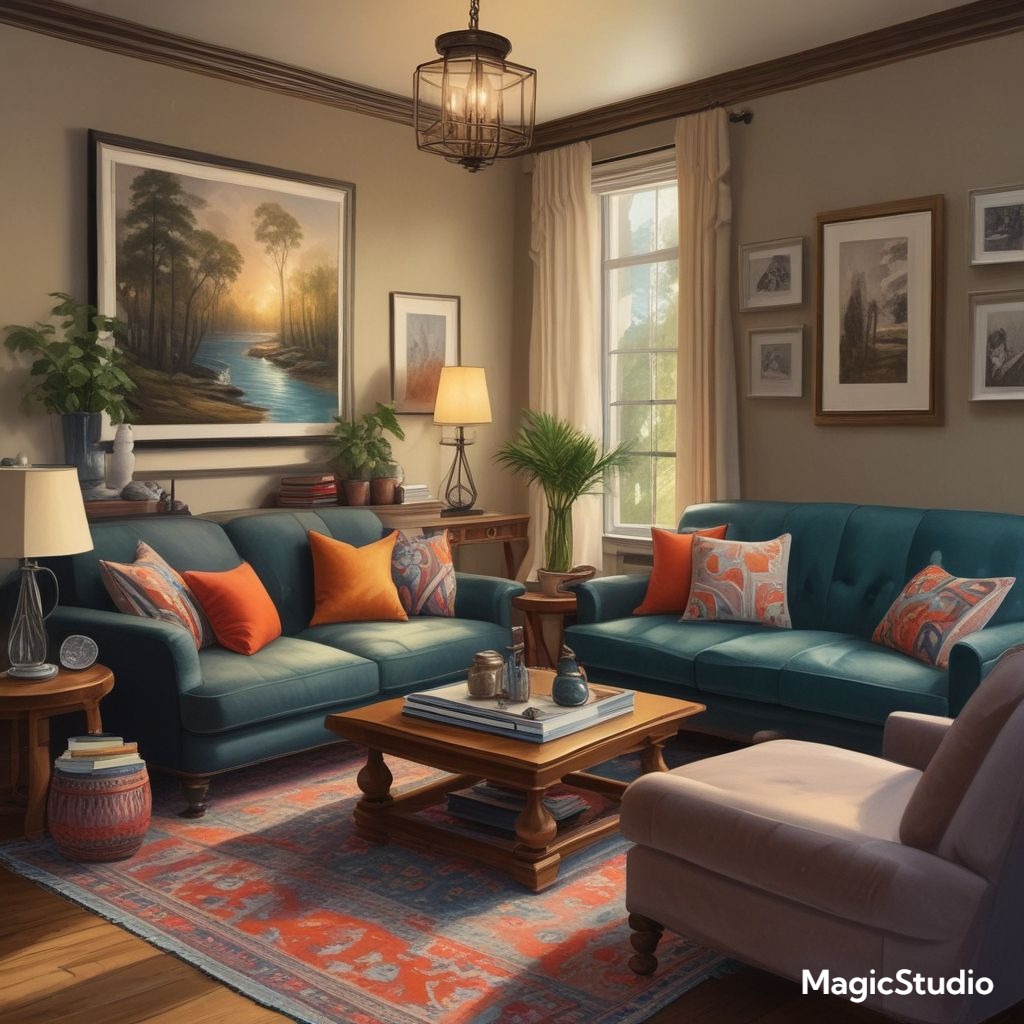
Minimalist Zen
Japanese design is renowned for its minimalist approach. Keep your living room clutter-free, focusing on essential furniture pieces with clean lines and simple forms. Choose a neutral color palette, such as white, grey, or black, and add pops of color through accent pillows, artwork, or plants. The use of natural materials like wood and stone further enhances the minimalist aesthetic. The popularity of this style in both the US and EU is driven by its practicality, ease of maintenance, and ability to create a sense of space and tranquility.

Nature-Inspired Tranquility
Bring the serene beauty of nature indoors. Incorporate natural elements like wood, stone, and bamboo into your living room design. Use a muted color palette inspired by the natural world, such as earthy browns, greens, and blues. Introduce plants and flowers to add life and freshness to the space. This style is deeply rooted in Japanese culture, where nature is revered and incorporated into all aspects of life. Both the US and EU are embracing the biophilic design movement, which emphasizes the connection between humans and nature, making this design idea highly appealing.
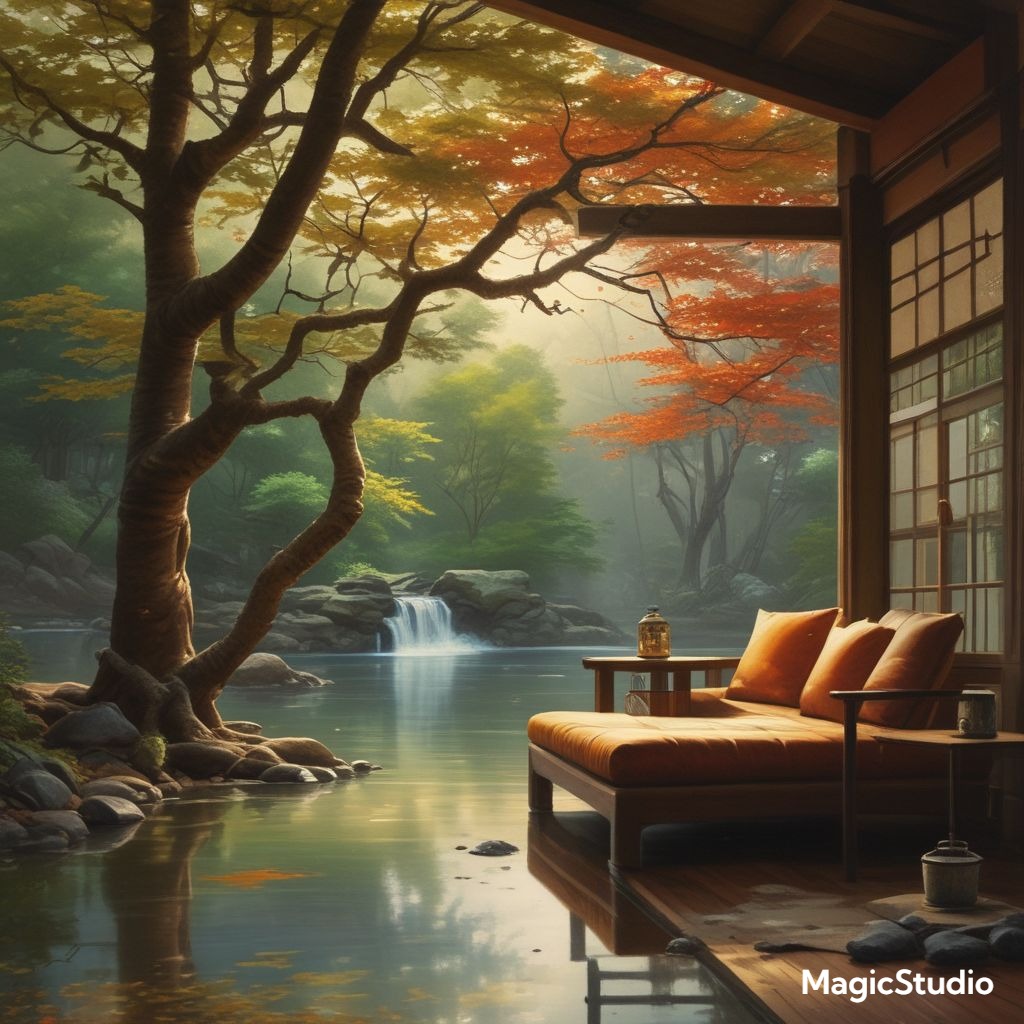
Bamboo Elegance
Bamboo is a versatile and sustainable material that adds a distinct Japanese touch to any living room. Use bamboo furniture, flooring, or decorative accents. Pair it with natural fibers like cotton or linen and a muted color palette, incorporating shades of green, brown, and beige. Bamboo’s natural warmth and texture contribute to a calming and inviting atmosphere. This style is gaining popularity worldwide as people seek sustainable and eco-friendly interior solutions.

Shoji Screen Sophistication
Shoji screens are traditional Japanese sliding doors made of translucent paper stretched over a wooden frame. They offer a unique way to partition space and create a sense of privacy in the living room. They allow soft natural light to filter through, creating a warm and inviting ambiance. The delicate paper panels also add a touch of elegance and sophistication to the design. In the US, shoji screens are often incorporated into modern homes, creating a unique and interesting design element. The EU, with its appreciation for traditional craftsmanship, embraces shoji screens as a way to integrate Japanese design into contemporary spaces.
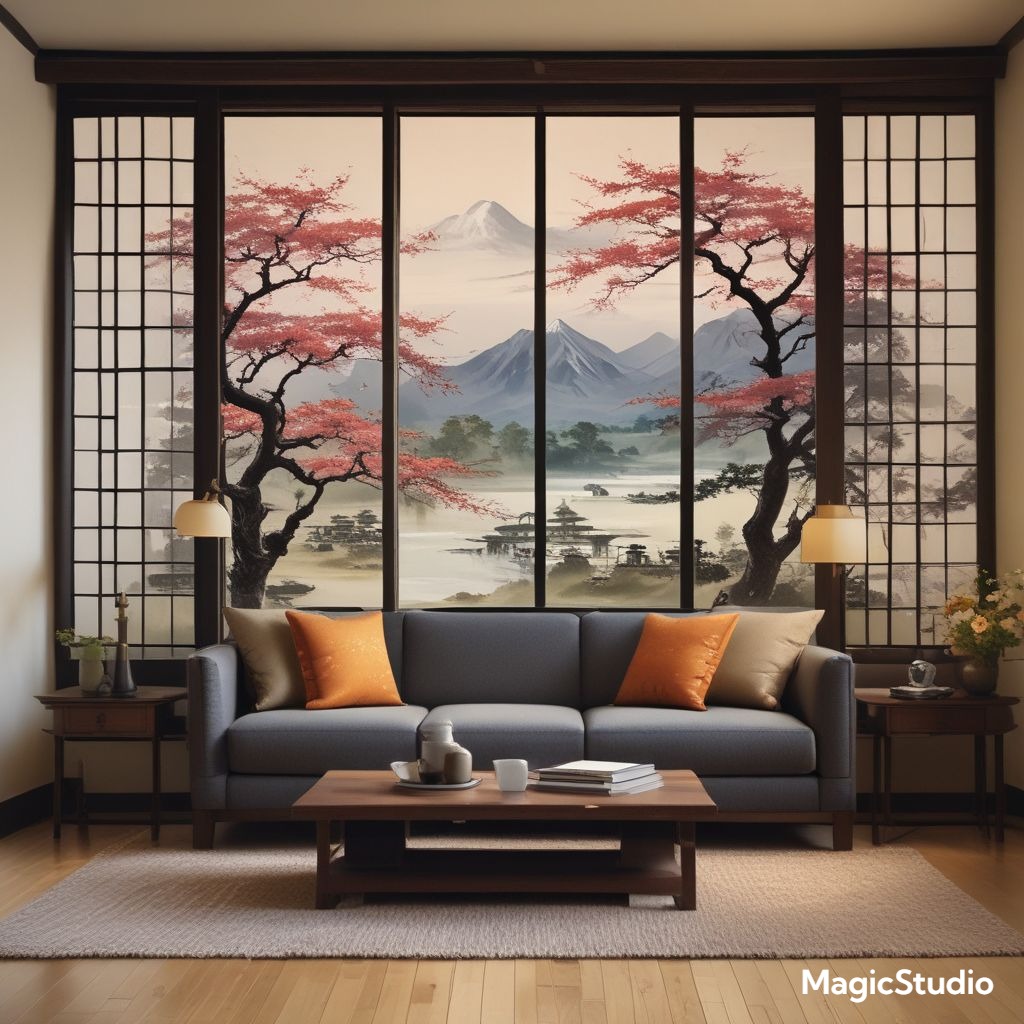
Cherry Blossom Charm
Incorporate the beauty of cherry blossoms into your living room design. Use cherry blossom motifs in artwork, textiles, or decorative accents. Choose a color palette inspired by the flowers, including shades of pink, white, and green. Combine these elements with natural materials like wood and bamboo for a harmonious and elegant aesthetic. Cherry blossoms represent the fleeting beauty of life, making them a perfect choice for creating a serene and contemplative space. This style is particularly popular in the US, where cherry blossoms symbolize spring and renewal.
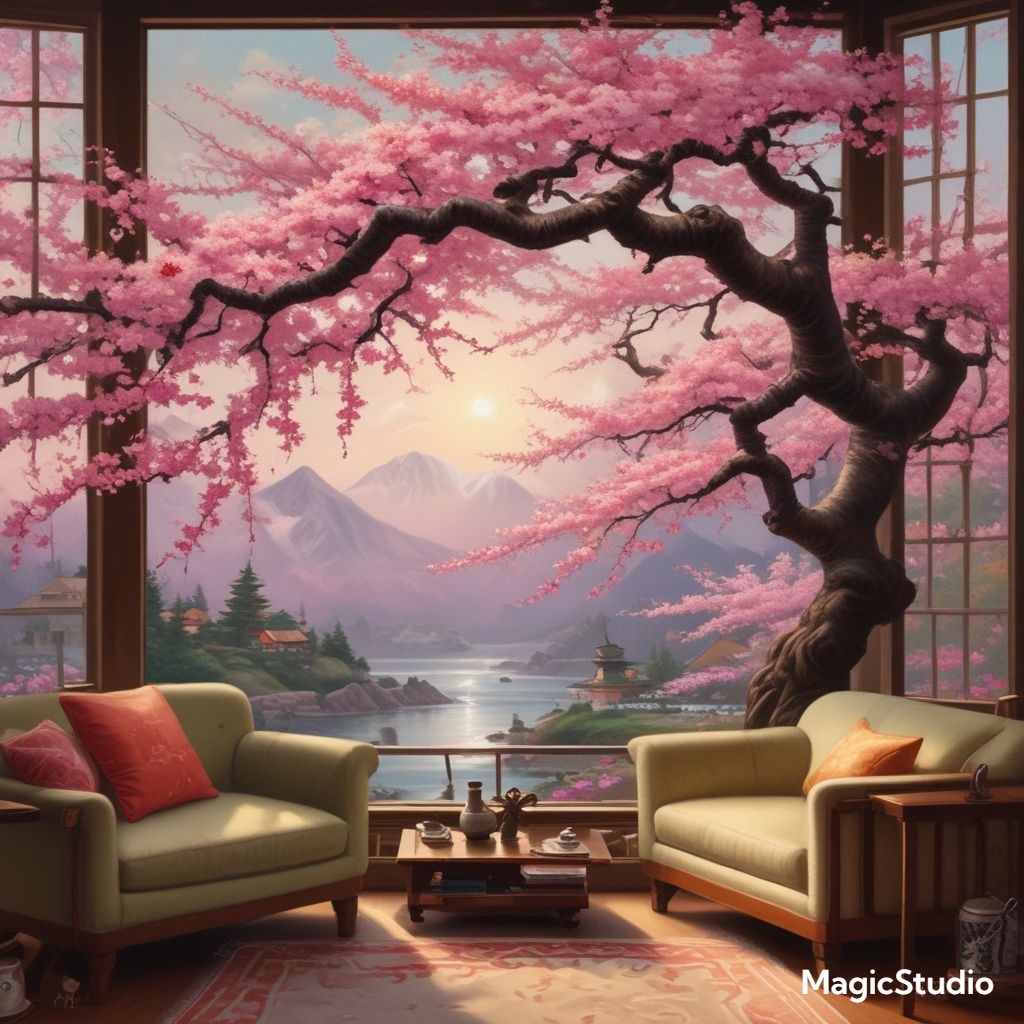
Tatami Mat Tranquility
Tatami mats are traditional Japanese floor coverings made of woven rush grass. They offer a natural and comfortable surface for sitting and relaxing. They also add a touch of traditional Japanese design to any living room. Use tatami mats in a dedicated seating area or incorporate them into the overall flooring design. Pair them with low-lying furniture and cushions for a comfortable and authentic Japanese experience. This style is gaining popularity in the US and EU as people seek more sustainable and natural flooring options.
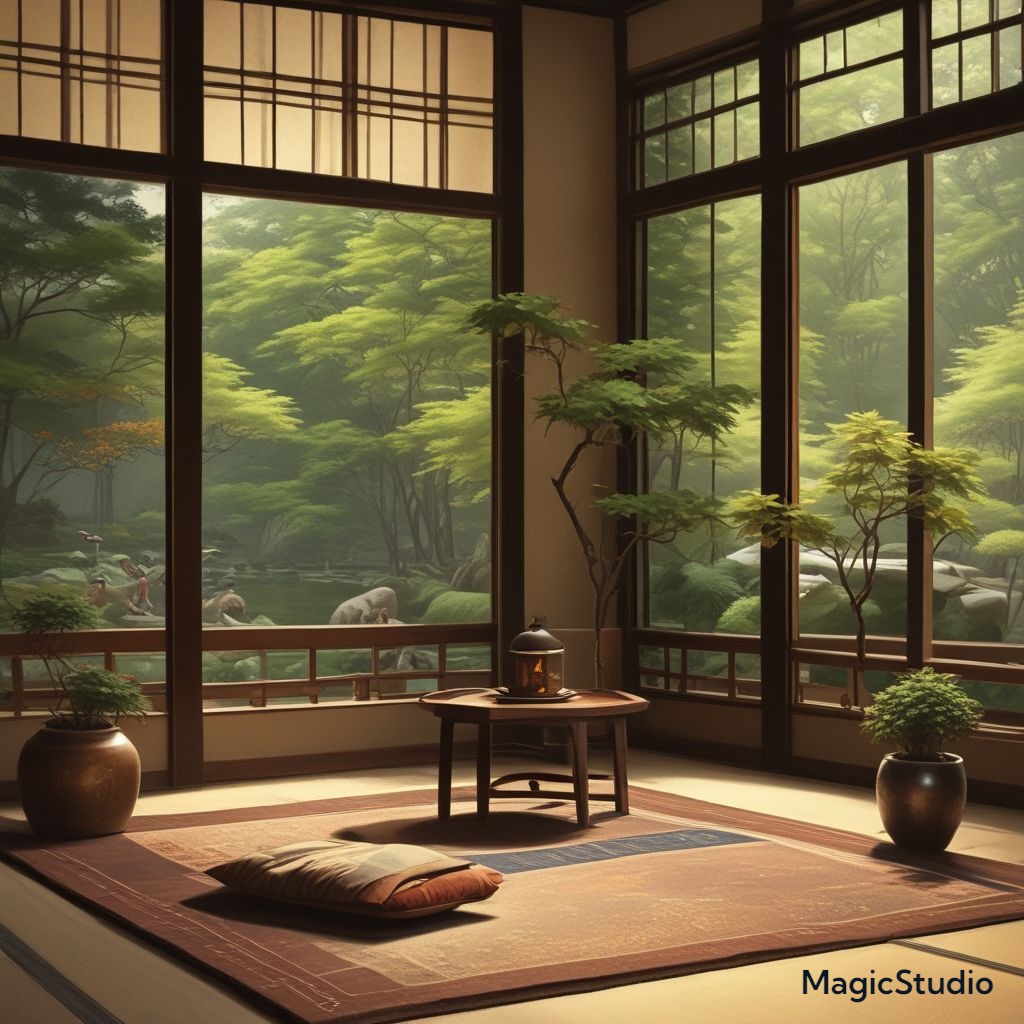
Ikebana Artful Arrangements
Ikebana is the Japanese art of flower arranging. Bring this artistic tradition into your living room by creating beautiful floral arrangements. Use a variety of flowers, branches, and foliage in a minimalist and asymmetrical style. Choose a vase that complements the flowers and your overall living room design. Ikebana adds a touch of elegance and beauty to any space while reflecting the Japanese appreciation for nature and simplicity. The minimalist approach of Ikebana aligns well with the modern design trends in both the US and EU.
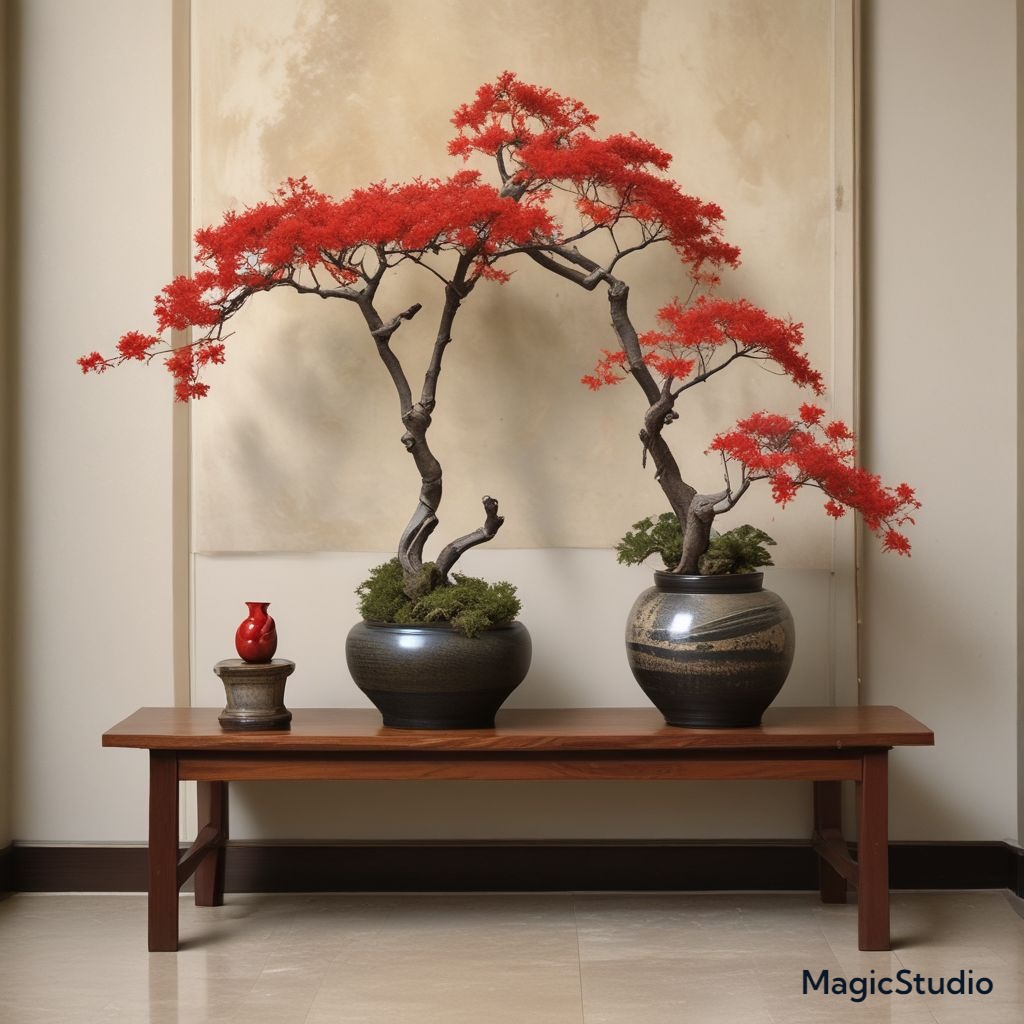
Floating Furniture
Floating furniture, where furniture appears to hover above the ground, is a modern take on traditional Japanese design. This style emphasizes simplicity and minimalism, creating a sense of lightness and airiness in the living room. Use furniture with thin legs or platforms that create the illusion of floating. Choose a neutral color palette and incorporate natural materials like wood or bamboo for a harmonious aesthetic. Floating furniture is particularly popular in contemporary homes in both the US and EU, where space-saving solutions and minimalist design are highly valued.
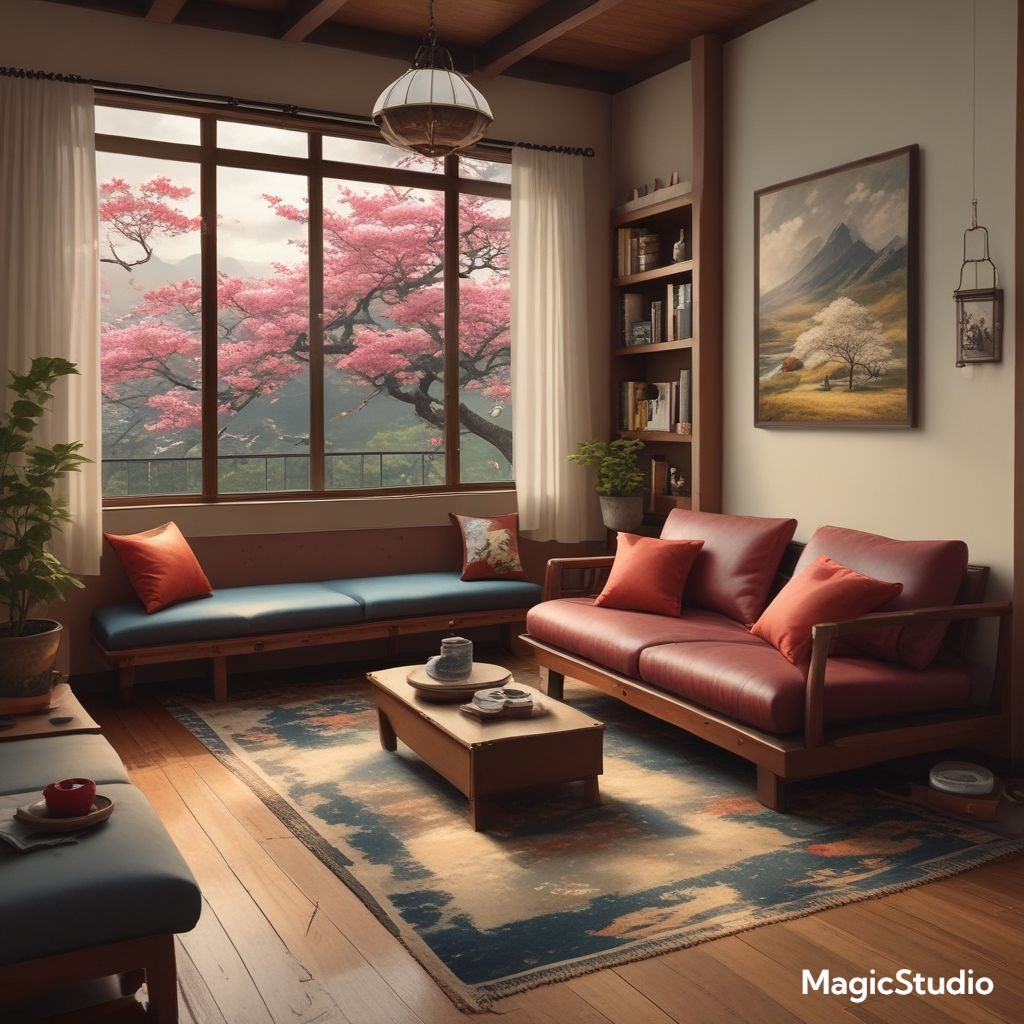
Paper Lantern Luminosity
Paper lanterns are a traditional Japanese decorative element that adds a warm and inviting glow to any living room. Use a variety of sizes and shapes to create a unique and interesting visual display. Choose lanterns in natural colors like white, cream, or beige to complement the overall design. Hang them from the ceiling or place them on shelves or tables for a subtle and elegant touch. Paper lanterns are widely used in both the US and EU for their versatility and ability to create a cozy and inviting atmosphere.
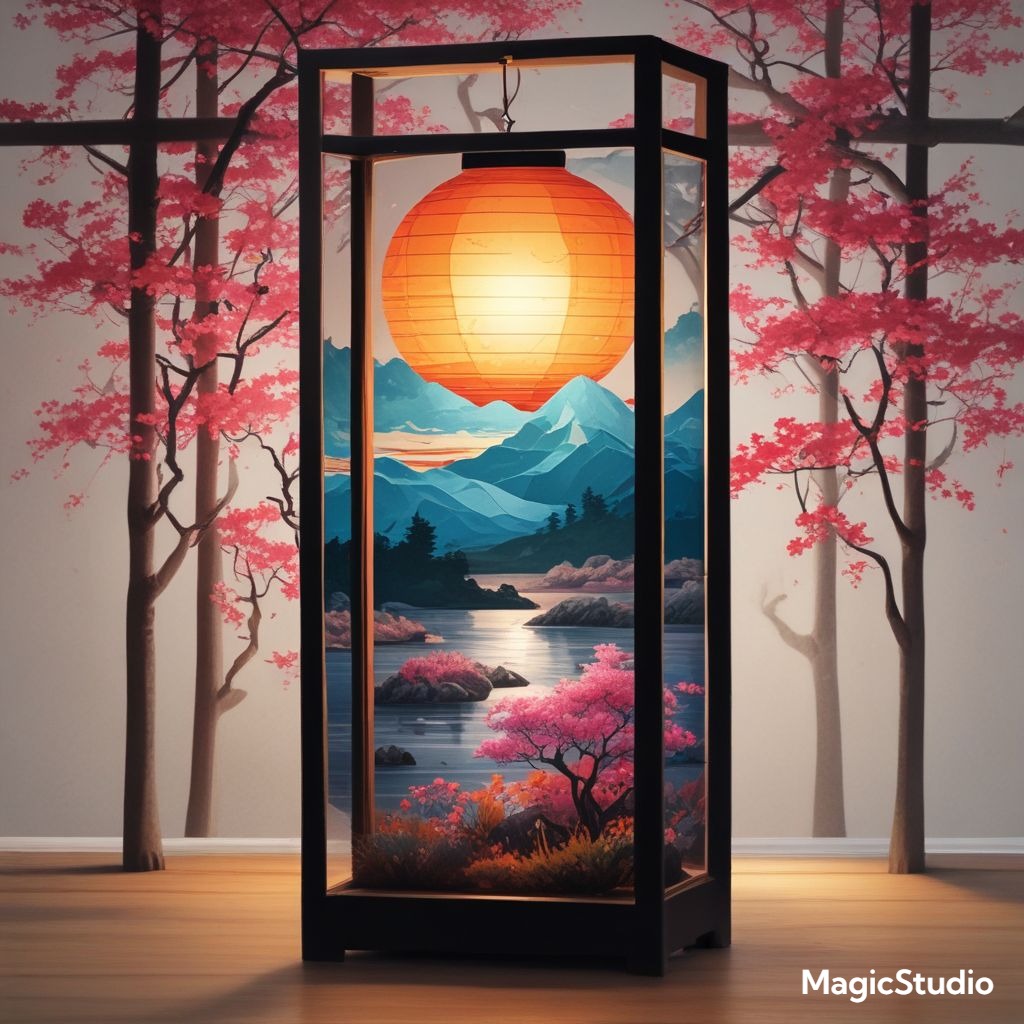
Japanese Calligraphy Artwork
Japanese calligraphy, known as “Shodo,” is a beautiful and expressive art form. Incorporate calligraphy artwork into your living room to add a touch of cultural richness and sophistication. Choose a piece that features elegant brushstrokes and meaningful characters. Frame it in a simple and minimalist style to let the artwork take center stage. Japanese calligraphy is becoming increasingly popular in the US and EU as people seek unique and meaningful art pieces to adorn their homes.
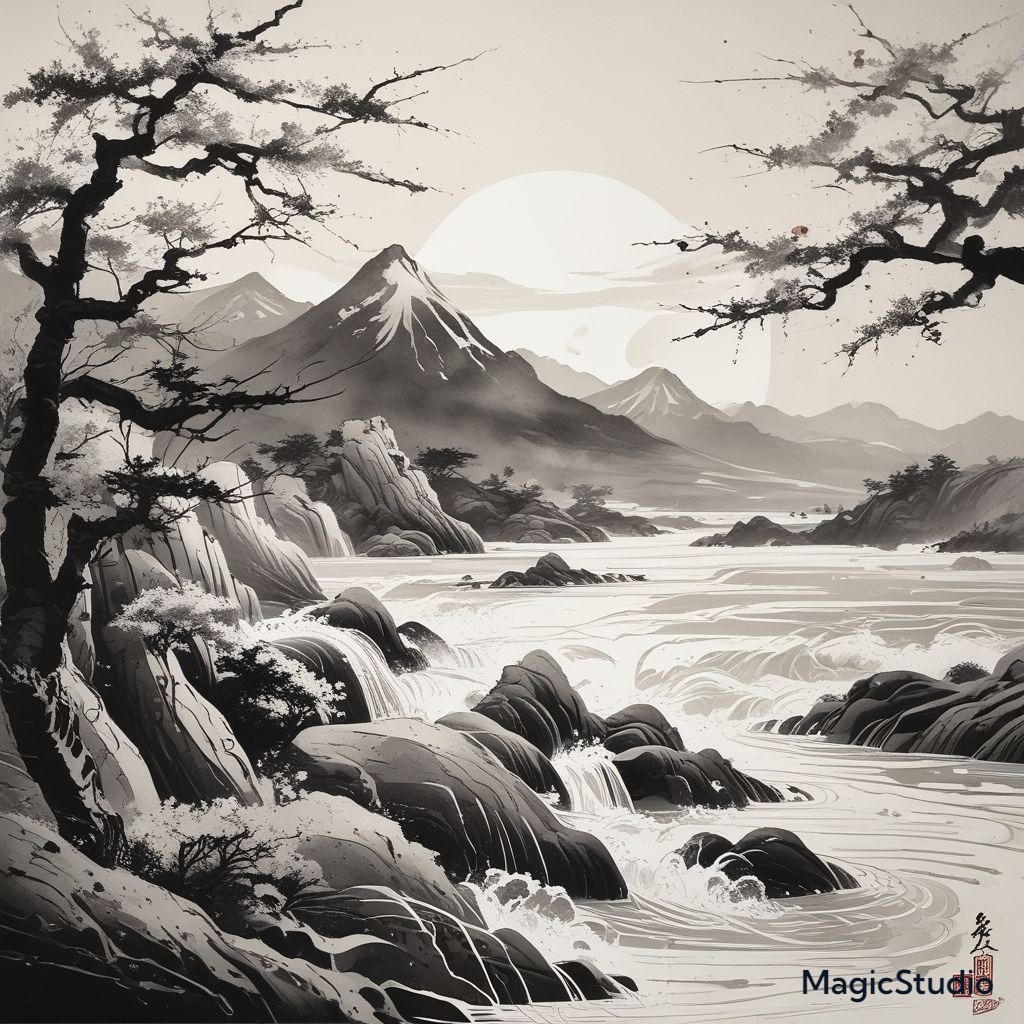
Geometric Patterns
Japanese design often features geometric patterns, particularly those found in traditional textiles and ceramics. Incorporate these patterns into your living room through rugs, cushions, or artwork. Popular patterns include the “seigaiha” (wave pattern), “kiku” (chrysanthemum), and “kumiko” (geometric lattice). These patterns add a touch of cultural richness and visual interest to the space, while also creating a sense of order and balance. Geometric patterns are a popular trend in both the US and EU, particularly in contemporary design.
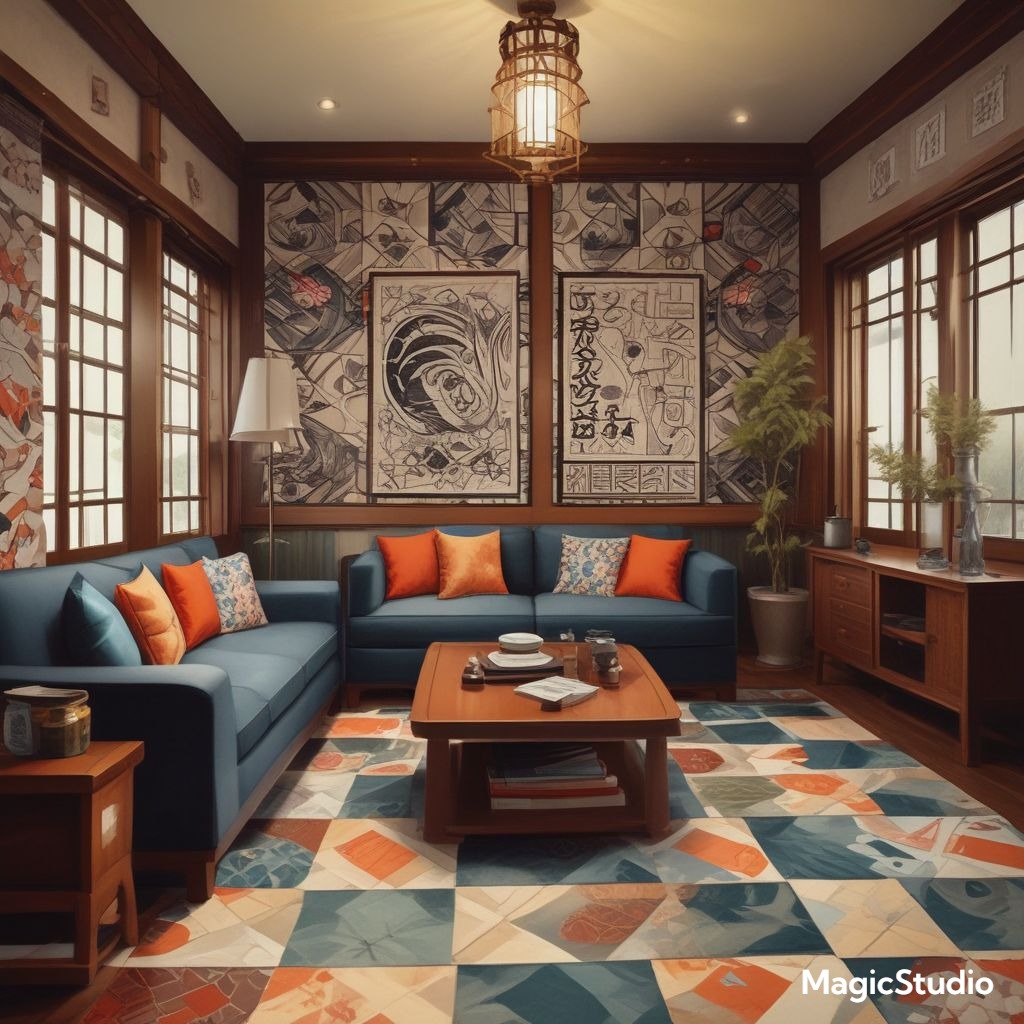
Tea Ceremony Tranquility
The Japanese tea ceremony, or “Chanoyu,” is a traditional ritual that emphasizes simplicity, mindfulness, and harmony. Incorporate elements of the tea ceremony into your living room design to create a peaceful and contemplative space. Use a low table for seating, cushions for comfort, and a simple tea set for brewing tea. Choose a subdued color palette and incorporate natural materials like wood, bamboo, and ceramics for a serene and authentic aesthetic. The tea ceremony is becoming increasingly popular in the US and EU as people seek ways to incorporate mindfulness and ritual into their daily lives.
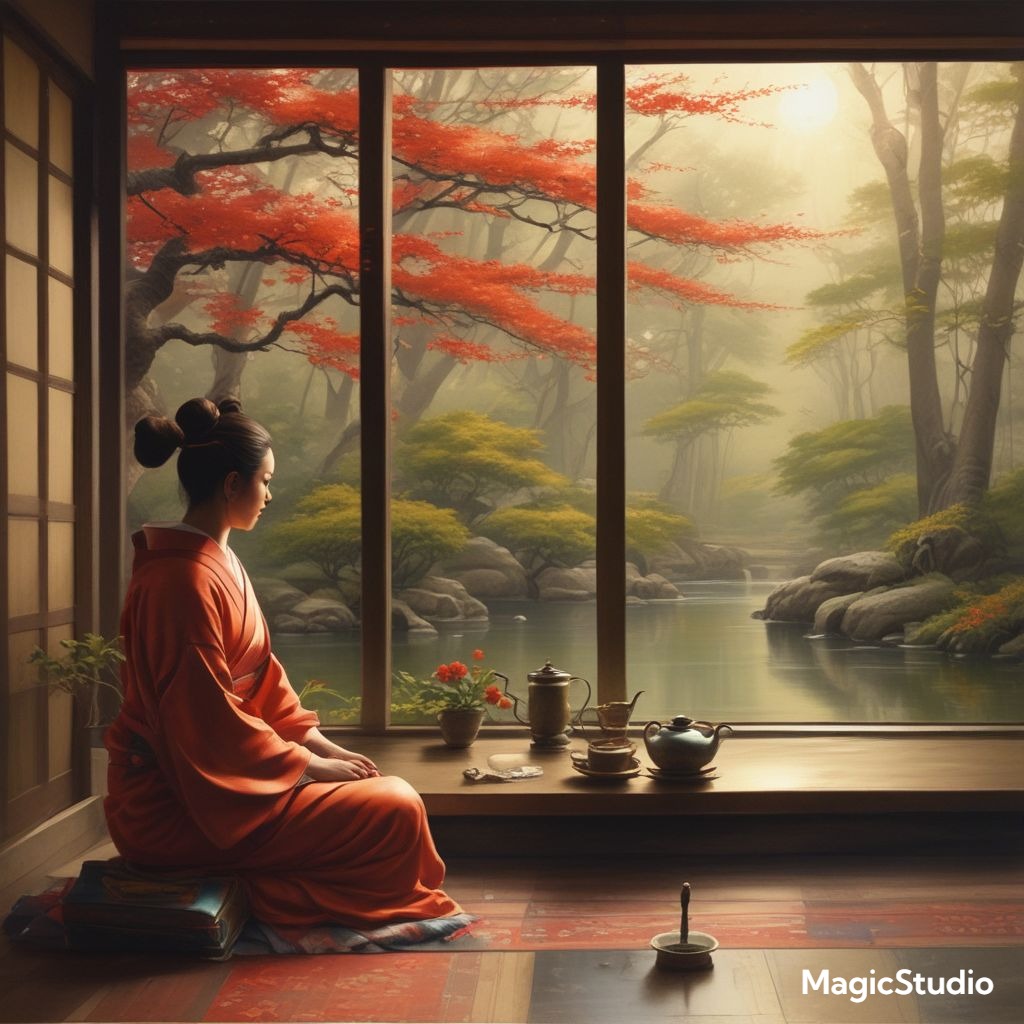
Washi Paper Elegance
Washi paper is a traditional Japanese paper made from the fibers of the gampi, mitsumata, or kozo trees. It is known for its beauty, durability, and versatility. Use washi paper in your living room for decorative accents, lampshades, or even as wall coverings. Choose washi paper in natural colors like beige, white, or cream for a subtle and elegant touch. This paper adds a touch of cultural sophistication and a distinct Japanese aesthetic to any space. Washi paper is gaining popularity in both the US and EU as people seek sustainable and environmentally friendly materials for their homes.
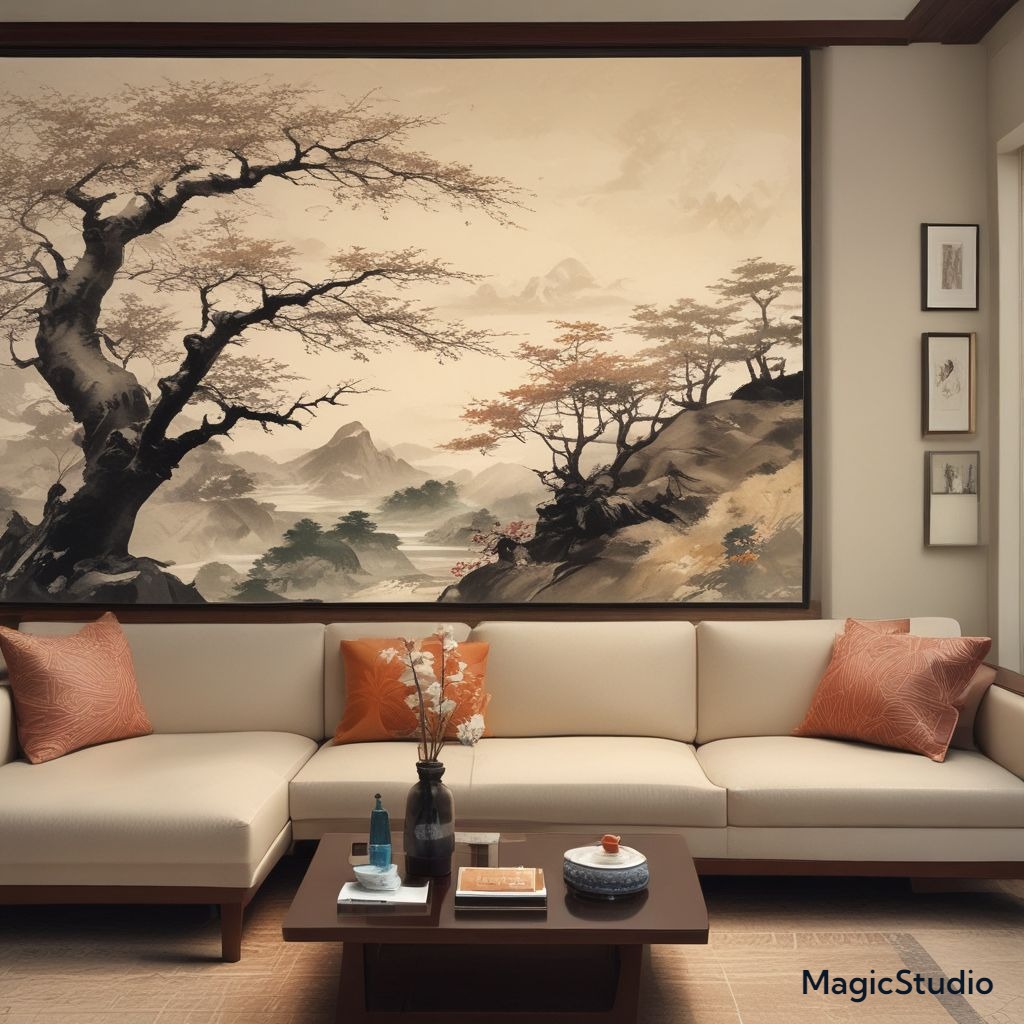
Bonsai Tree Serenity
Bonsai trees are miniature trees that are meticulously cultivated to represent the beauty and essence of larger trees. Incorporate a bonsai tree into your living room to create a serene and meditative atmosphere. Choose a bonsai tree species that complements the overall design and light conditions of the space. Place it on a low table or stand and care for it with the same mindfulness and attention to detail as the Japanese bonsai masters. Bonsai trees are becoming increasingly popular in the US and EU, as people appreciate their beauty and the sense of peace they bring to a space.
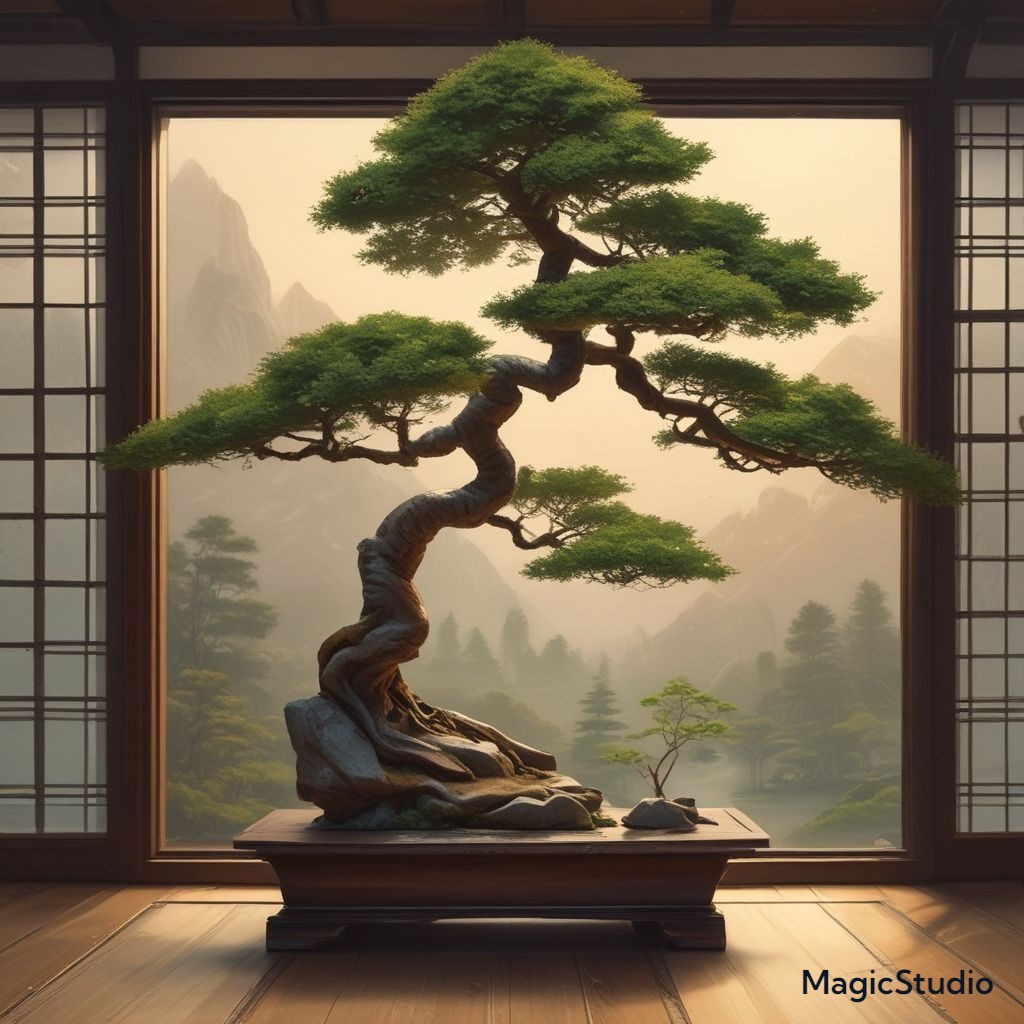
Koinobori Windsock Cheerfulness
Koinobori are traditional Japanese carp streamers that are flown during Children’s Day. These colorful windsocks symbolize strength, courage, and prosperity. Incorporate koinobori into your living room design by hanging them from the ceiling or displaying them on a shelf. Choose a variety of colors and sizes to create a cheerful and festive atmosphere. Koinobori are a reminder of the importance of tradition, celebration, and the joy of childhood. This design element is particularly popular in the US, where it adds a playful and vibrant touch to the space.

